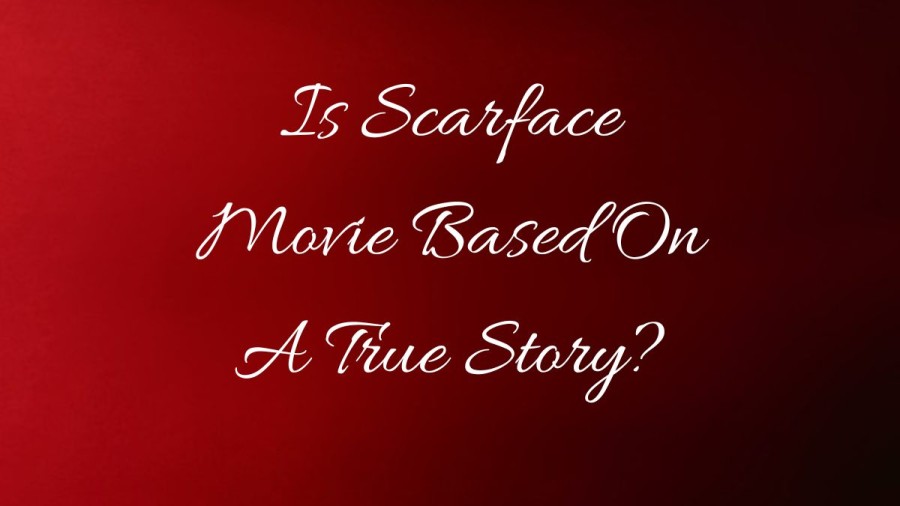Physical Address
304 North Cardinal St.
Dorchester Center, MA 02124
Physical Address
304 North Cardinal St.
Dorchester Center, MA 02124

Contents
This section provides information on the 1983 American crime drama film, Scarface, directed by Brian De Palma and written by Oliver Stone. It tells the story of Cuban refugee Tony Montana, who becomes a powerful and homicidal drug lord after arriving penniless in Miami. The film initially received negative reviews for its excessive violence, profanity, and graphic drug usage but has since been regarded as a cult classic and one of the greatest gangster films ever made. The section also includes details on the cast and production of the movie.
Al Capone, the inspiration behind the fictional Scarface, has been the subject of numerous films, including the 1959 film “Al Capone” starring Rod Seiger, the 1967 film “The St. Valentines Day Massacre” starring Jason Robards, and the 1995 film “Dillinger and Capone” starring Martin Sheen and F. Murray Abraham. However, the most beloved rendition of Capone’s story is the 1987 film “The Untouchables,” starring Robert de Niro as Capone, Kevin Costner, and Sean Connery.
The original Scarface, released in 1932, was loosely inspired by the life and criminal activities of Al Capone and directed by Howard Hawks. The film was a major Hollywood production that dealt with organized crime, but it was banned in several areas of the United States due to its violent content. Scarface follows the rise of a young man named Antonio “Tony” Camonte in Chicago’s mob scene, and it included Capone’s infamous 1929 Saint Valentine’s Day Massacre.
Although Scarface was a groundbreaking film for its time, it faced controversy and pushback from the Hays Code, a set of Hollywood censorship guidelines that required films to promote moral themes. Unlike later gangster films such as The Godfather, Scarface was not allowed to depict its criminal protagonist sympathetically, and the film was released with the alternative title “The Shame of A Nation” to distance the studio from gangster activities. The Hays Code also required significant changes to the film’s plot, such as toning down its violence and altering the ending to be less glorifying of Tony’s criminal empire.
Despite the challenges it faced, Scarface remains one of the greatest gangster films of all time and has had a lasting impact on Hollywood. Its legacy includes inspiring the iconic 1983 film “Scarface” directed by Brian de Palma and starring Al Pacino as the renamed Tony Camonte. Today, gangster films are a staple of the film industry, but Scarface’s pre-code era legacy illustrates the evolution of Hollywood’s attitudes towards portraying criminal activity and its impact on the portrayal of mobsters in film.
This section provides a summary of the movie Scarface. The film is about a Cuban refugee named Tony Montana, who arrives in Miami as part of the Mariel boatlift. Together with his friend Manny and their companions Angel and Chi-Chi, they are released from a refugee camp in exchange for murdering a former Cuban general at the request of Miami drug lord Frank Lopez. After working for Frank, Tony sets up his independent cocaine operation and becomes a distributor of cocaine kingpin Alejandro Sosa’s product. He marries Elvira and builds a multi-million-dollar business empire, but he is later charged with tax evasion and faces a prison sentence. Sosa offers to help him in exchange for killing an activist intending to expose his drug operations. After killing the activist, Tony’s life falls apart, and he dies after being shot by one of Sosa’s men.
You can watch the movie Scarface on Peacock. The movie is a reworking of Howard Hawks’s 1932 film, with the action transposed to Fidel Castro’s “Mariel” expulsion of jailbirds from Cuba in 1980. The review praises Pacino’s performance, noting that his portrayal of Tony Montana is intensely watchable. However, it also criticizes the film’s brutal unsubtlety and its protagonist’s unappealing qualities, such as his thirst for sex, money, and blood. The review suggests that the film’s themes are a reflection of the political climate of the 1980s, with its anti-communist sentiment and drug epidemic.